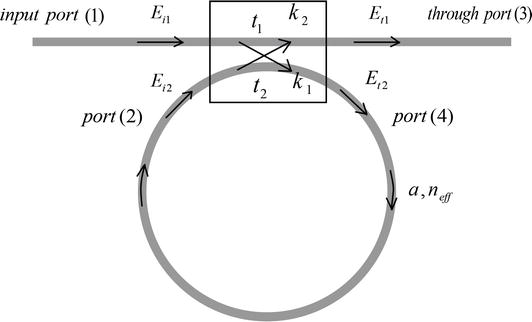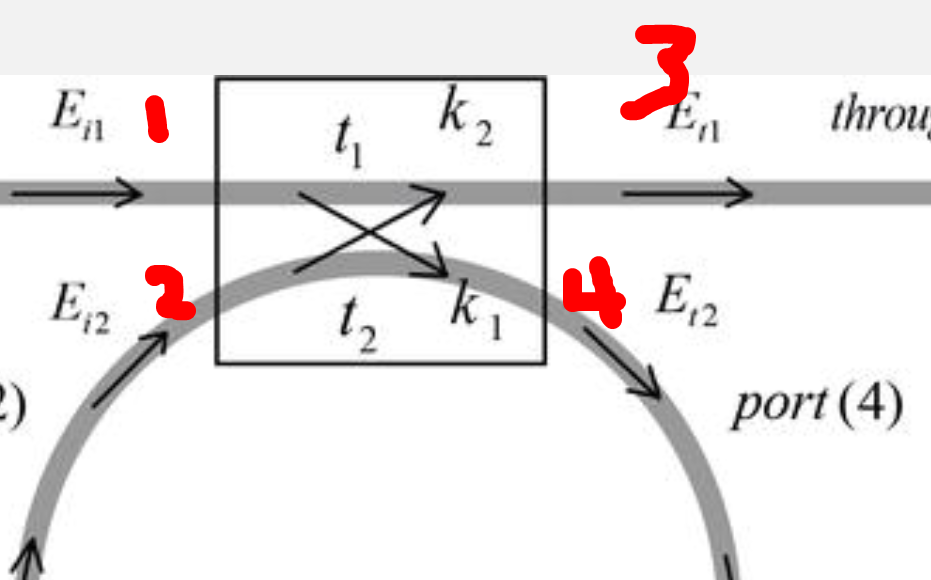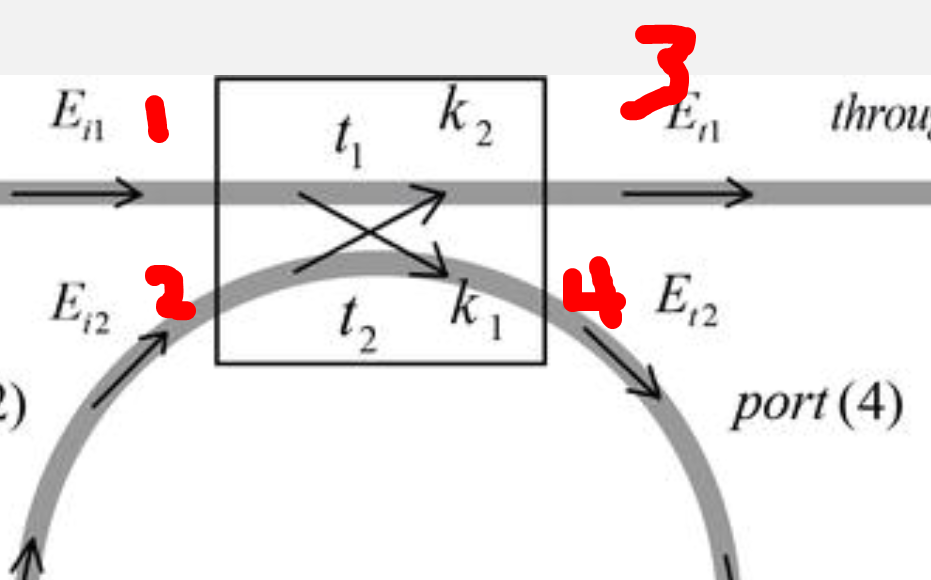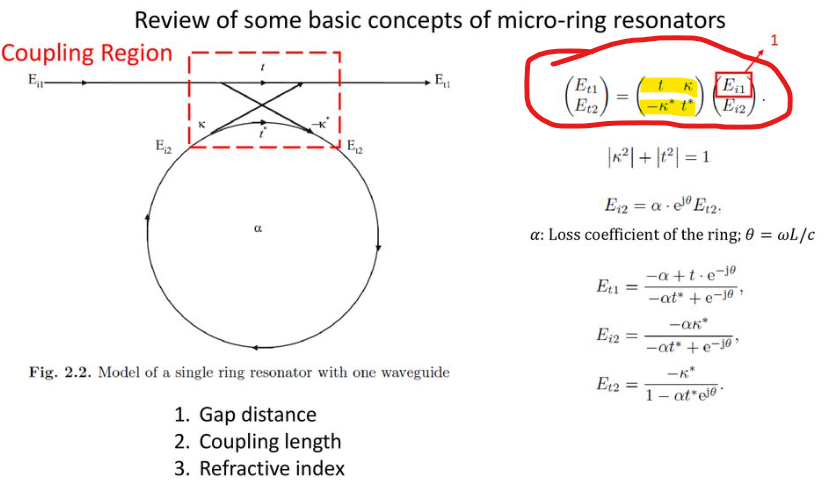-
-
November 12, 2022 at 1:20 pm
Amante Joshua Jr. Dumalus
SubscriberGiven an optical ring resonator with an all pass filter configuration (shown below), how do you calculate the coupling coefficient k in Lumerical VarFDTD simulations?
In Lumerical tutorials, I followed the instructions that find the s-parameters. The s-parameters were descirbed as complex transmission coefficients. Is it correct to say that the s-parameters can derive the coupling coefficient k of the optical ring resonator?
-
November 14, 2022 at 6:18 pm
Guilin Sun
Ansys EmployeeYou will need to follow the definition by injecting Ei1 to get Et1 and Et2, and then Ei2.
S parameters are for the modes.
-
November 15, 2022 at 10:49 am
Amante Joshua Jr. Dumalus
SubscriberThank you for the response.
Can you please expound in finding the electric fields Ei1, Et1, Et2, Ei2 using Lumerical? Are there general steps to get the coupling coefficients of any ring resonator configuration? The example given is for the simplest case for a ring resonator design.
-
November 15, 2022 at 6:28 pm
Guilin Sun
Ansys Employeecoupling coefficients have different definitions. Lumerical has an example for power coupling coefficient, since this is what is used in INTERCONNECT:
Waveguide Coupler (C) - INTERCONNECT Element
https://optics.ansys.com/hc/en-us/articles/360042322794-Ring-Modulator
"The coupling coefficient is the fraction of power that couples from the fundamental TE-mode in the straight waveguide to the fundamental TE-mode of the curved waveguide. "
But what you require is the amplitude coupling coefficient. The diagram shown above is for complex amplitude with a mode incidence, dominate field component Ei1; and then you can use a frequency monitor in the bus to get Et1 if it records the single mode. Similarly for others.
It might be better to have the mode S parameters, where S31 reprents t1, S41 represents k1:
You will need to think which method you want to use, and what the text in the reference tells you. Once you know exactly what quantities you want to simulate, I can help you for the simulation.
-
November 17, 2022 at 4:49 am
Amante Joshua Jr. Dumalus
SubscriberHello,We would like to ask how to get the amplitude coupling coefficients k's and t's. We are working to compare our ring resonator design with our analytical equation which is using the amplitude coupling coefficients as variables. We would like to make our analytically calculated transmission at through and drop ports to be very close to that of our simulation, which is why we need the amplitude coupling coefficients given a constant gap and coupling length from the simulation. If we are able to get the amplitude coupling cofficients and the corresponding transmission, we will then compare them with our analytical transmission with the same coupling coefficient and corresponding transmission. If they are the same, we are confident with our designs.The matrix equation for instance in the Figure below, how do we get amplitude coupling coefficients? Are they always complex or is there a way to make them real?You mentioned something about S parameters, are they the amplitude coupling coefficients? May we also ask what source configurations should we use if we want amplitude coupling coefficients?For example, do we need a broadband or narrowband source? Do we use one mode or multimode? We just want to get the amplitude coupling coefficient of a ring resonator design from Lumerical Mode.Thank you very much! -
November 17, 2022 at 2:39 pm
Guilin Sun
Ansys EmployeeAs you can see, the formulation uses plane wave concept with only one field component. Please check the mode source and find which field component you want to use.
In my previous reply, I did point out that you can choose the mode component to be the E fields you want to calculate, from the source and the monitor as well as mode expansion monitor. Please refer this article:
Using and understanding Mode Expansion Monitors
You will need to determine which quantities you want yo use.
If you think s parameters are good to use in the formula, you can use ports.
We do not have any similiar examples online. So please explore the methods.
-
- The topic ‘Coupling Coefficient k in VarFDTD simulations’ is closed to new replies.



-
3862
-
1414
-
1231
-
1118
-
1015

© 2025 Copyright ANSYS, Inc. All rights reserved.











